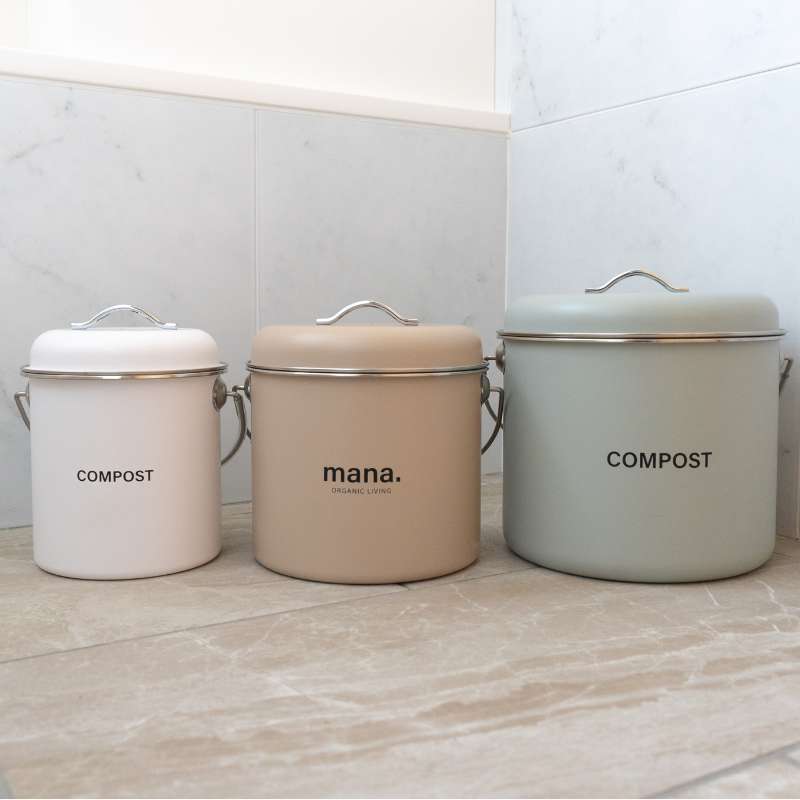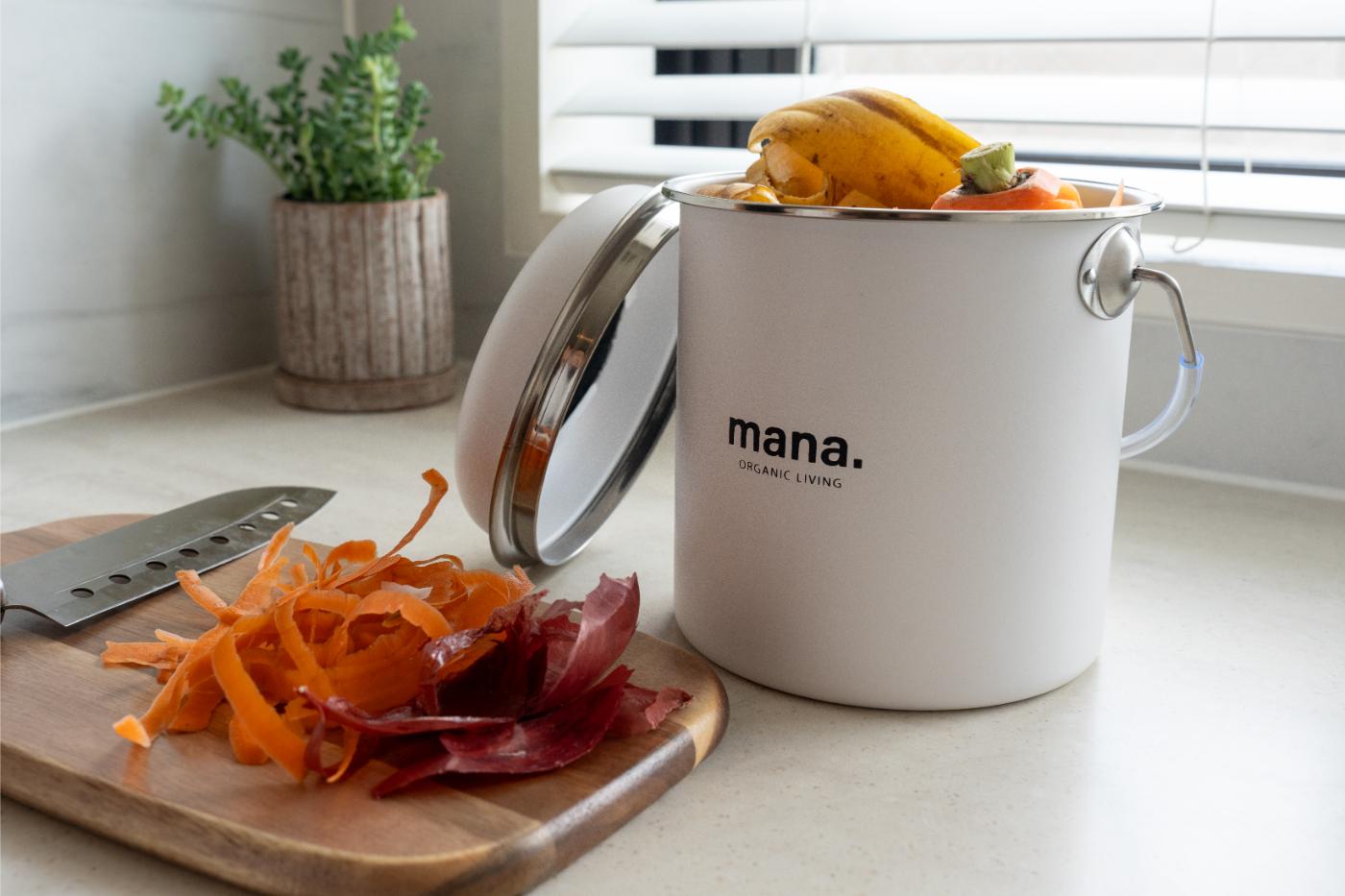
Home compost is also popular in our store!
This product is becoming more and more popular every year as an eco-friendly activity that can be easily started at home.
In recent years, each city and town has established a subsidy system for food waste disposal machines,
It has become an easy item to take as your first step towards becoming eco-friendly.
For those who want to start home composting,
This time, I've put together a simple guide on how to use it.
I bought it right away, but what should I do from here?
"I want to buy it, but I don't know how to get started..."
For those who have never heard of composting before,
First, read this article and see if it piques your interest.
We hope we can help you take one step in your eco-friendly activities!
1.What is compost?
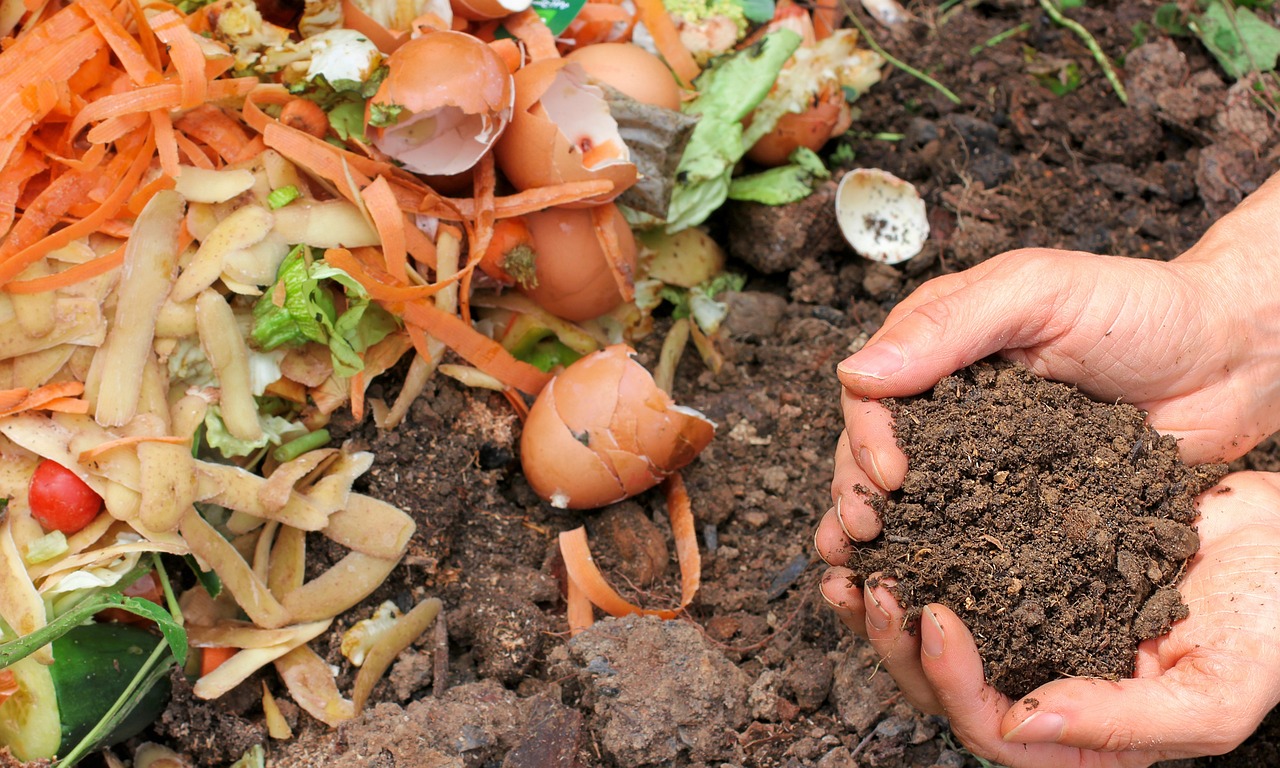
Compost refers to "compost" or a "container for making compost (composter)."
This system uses microorganisms to decompose and ferment organic matter such as food waste, fallen leaves, and sewage, turning it into compost.
Here are the three steps that composting takes.
1. Collect organic matter in one place
2. Microorganisms break down organic matter
3. Composting
Since it is actually the microorganisms that carry out the decomposition,
Humans can add new organic matter,
Its main role is to mix the water and bring in fresh air.
2. What you need to compost (preparation)
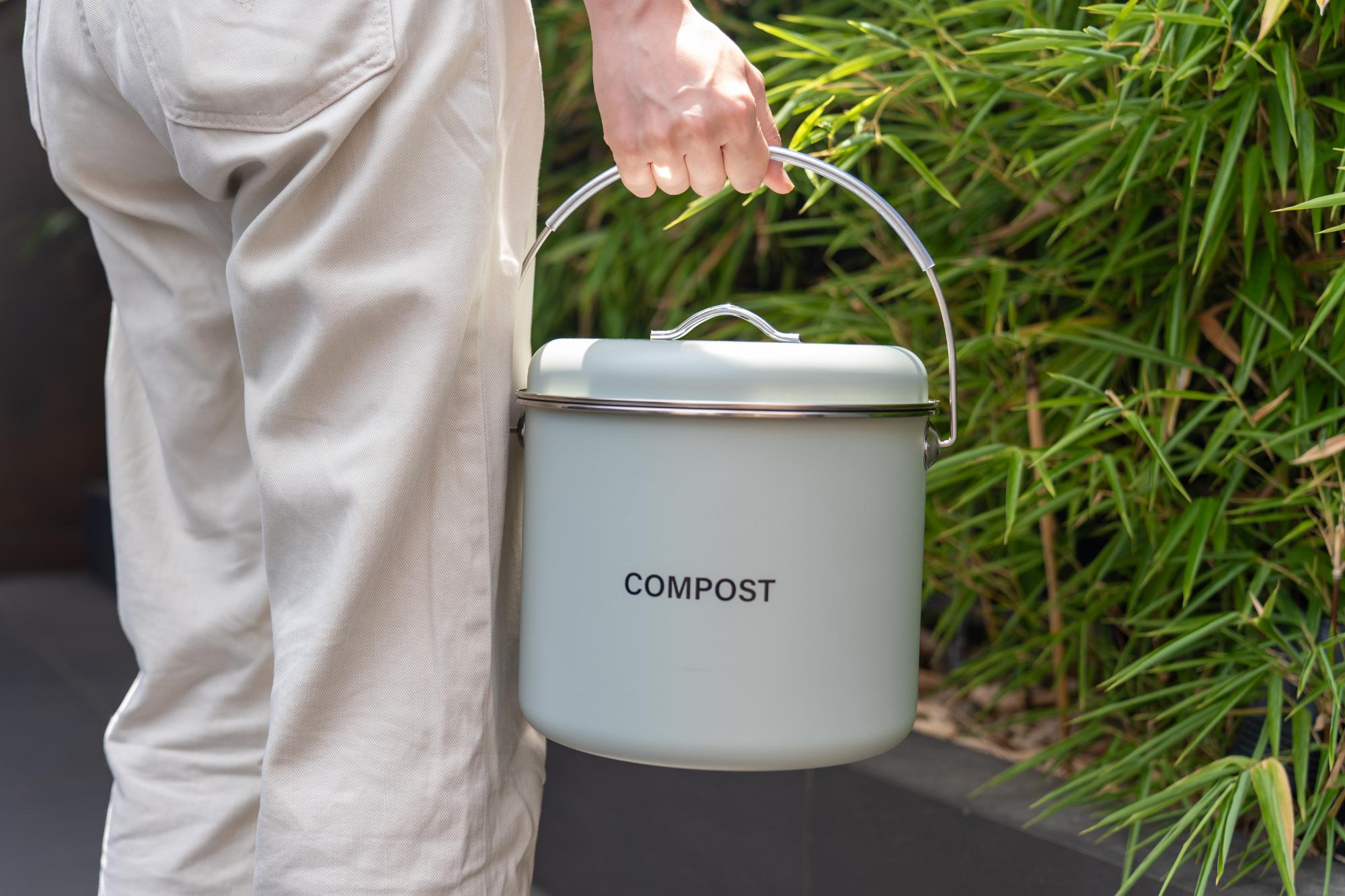
This time, we will introduce how to use a bucket compost.
You can start with a small amount depending on the size of your compost bin.
It is also recommended for beginners and those who live in apartments.
Materials to prepare: Base material*, food waste, compost container, shovel, newspaper
To promote compost fermentation,
It refers to "any materials or ingredients that are put into the garbage dump together with food waste."
The main role of the base material is to control the moisture content and allow air to be trapped.
You can purchase them at home improvement stores, but you can also make them yourself.
As a familiar example of making your own,
There are products that have fermentation agents (rice bran or fermentation accelerators) added to leaf mold or black soil.
(The ratio of leaf mold to fermentation accelerator varies depending on which fermentation accelerator is used, so
Please check the fermentation accelerator packaging carefully.)
There are also various other materials available, such as peat moss and rice husk charcoal.
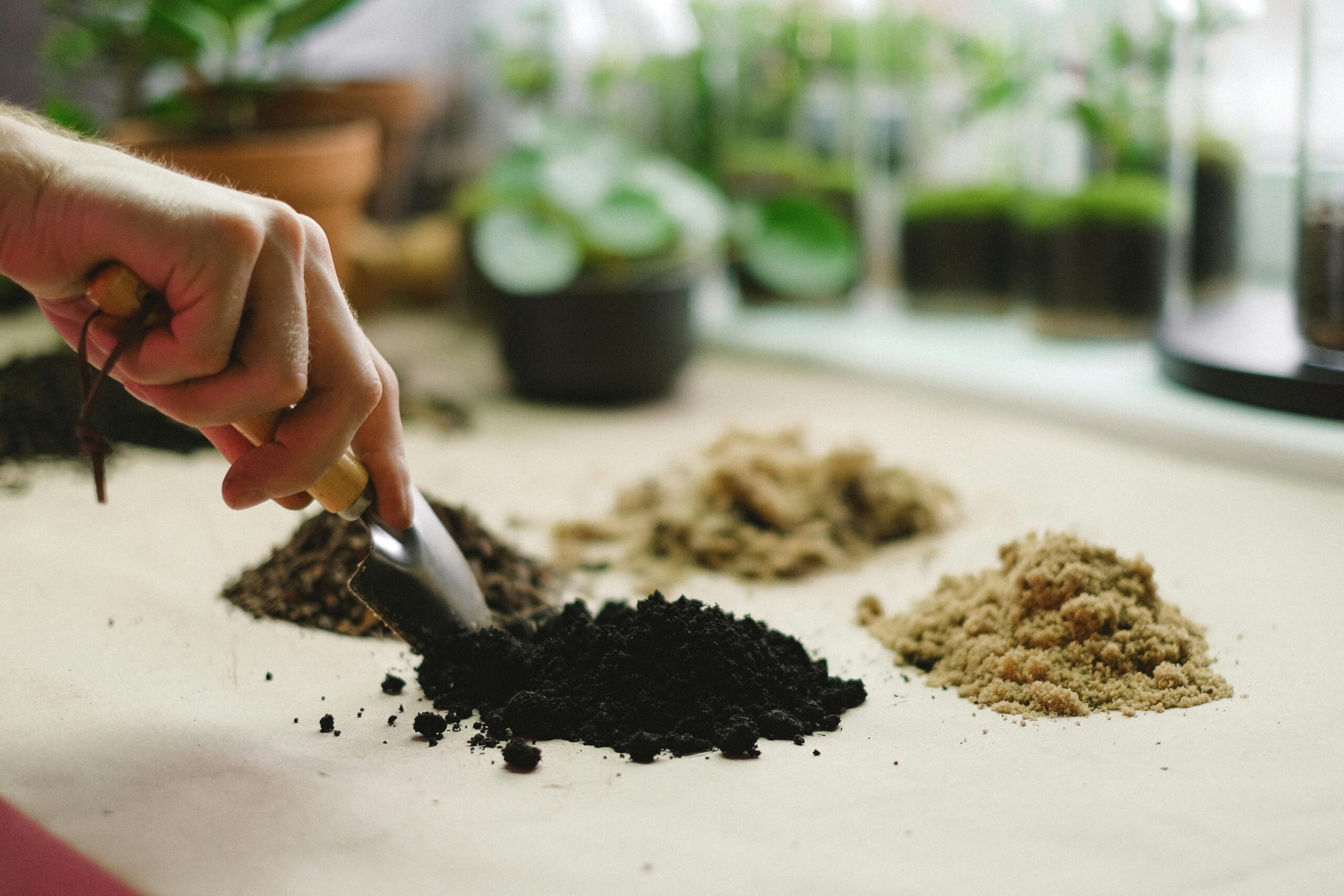
If you want to try it out,
Try using a substrate such as garden soil with rice bran added.
Another great thing about it is that you can start right away when you want to, and the initial investment is small!
We also have compost bins available in our store.
We also sell replacement deodorizing filters, so please take a look!
Compost products for home use
Home Compost S/M/L
S (White): 3,800 yen (excluding tax)
M (Earth Brown): 4,000 yen (excluding tax)
L (moss green): 4,500 yen (excluding tax)
Home Compost Deodorizing Filter, Set of 2
S: 240 yen (excluding tax)
M: 270 yen (excluding tax)
Large: 300 yen (excluding tax)
3. How to compost
From here on, I will explain how to actually do it.

Step 1
Place newspaper in the bottom of the bucket (this will absorb excess water from the food waste).
Step 2
Cut fresh food waste into pieces the size of a 500 yen coin and drain thoroughly or let it dry for a day.
Then, place the food waste in the compost bin and mix well with the substrate.
(It's easy if you use a ratio of 10 parts black soil, 1 part rice bran, and 1 part food waste as a rough guide!)
Step 3
Repeat Step 2 (adding food waste).
After 2-3 months of adding food waste, stop adding more.
(Ideally, you should stir daily, but at least once a week.)
Step 4
Continue to stir daily to once a week and let it mature for 1 to 2 months.
When stirring, add water about once a week to keep the mixture moist.
(The water content can be determined by squeezing the soil until it forms a lump.
It is said that it is good when it is firm enough to be able to break into 2-3 pieces.)
Step 5
Fermentation continues until the food waste disappears from sight.
If there is no increase in temperature* when water is added, your compost is ready!
Mix the resulting compost into soil before use.
(It takes about one month in summer and two months in winter.)
*When maturation is in progress, adding water will cause the temperature inside the compost to rise to approximately 20°C to 40°C.
4. What can and can't be put in compost
Even though they are all called "food waste," there are some things that can be put into the compost and some that cannot.
Basically, it is recommended to put in rice, wheat products, vegetable scraps, etc.
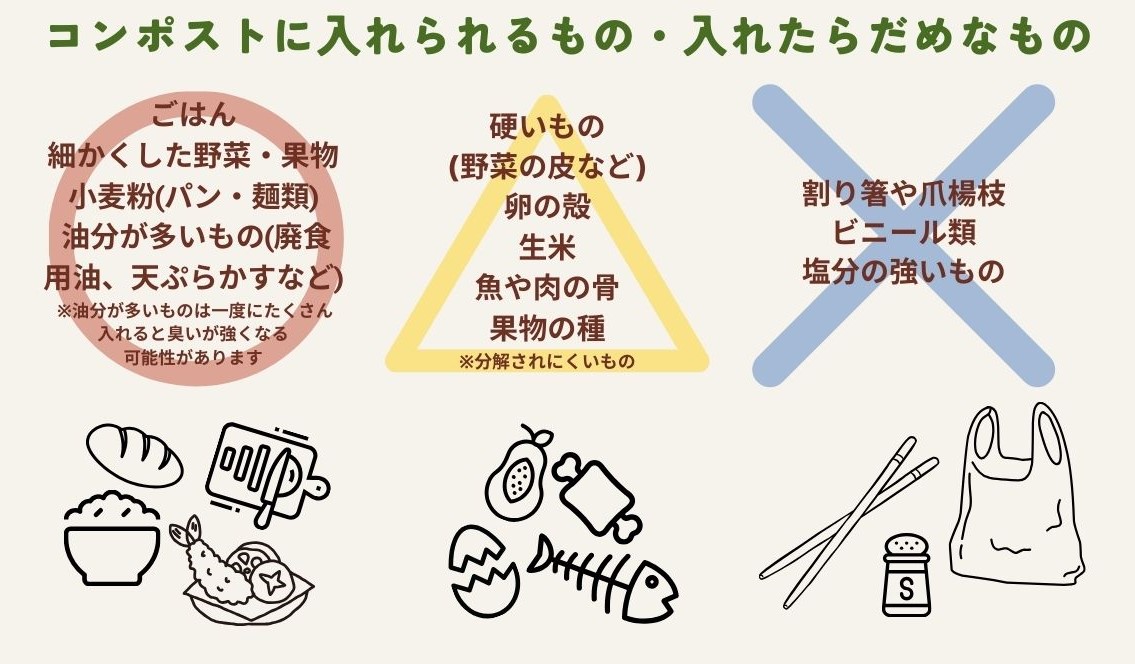
The decomposition rate varies depending on the ratio of the base material and the humidity in the compost.
When in doubt, the key is to add it little by little.
Even if it is okay to add something, be sure to add it in the appropriate amount and at the appropriate time.
If you put in too much food waste, it won't be able to break down quickly enough.
There is a possibility that it will rot.
In addition, raw meat and raw fish are particularly prone to insect infestation, so
If you are concerned about this, we recommend that you do not add it in advance.
5. Advantages and Disadvantages

Before you begin composting, it’s important to understand the advantages and disadvantages.
Taking into account both advantages and disadvantages,
If you think you can keep it up, please give it a try!
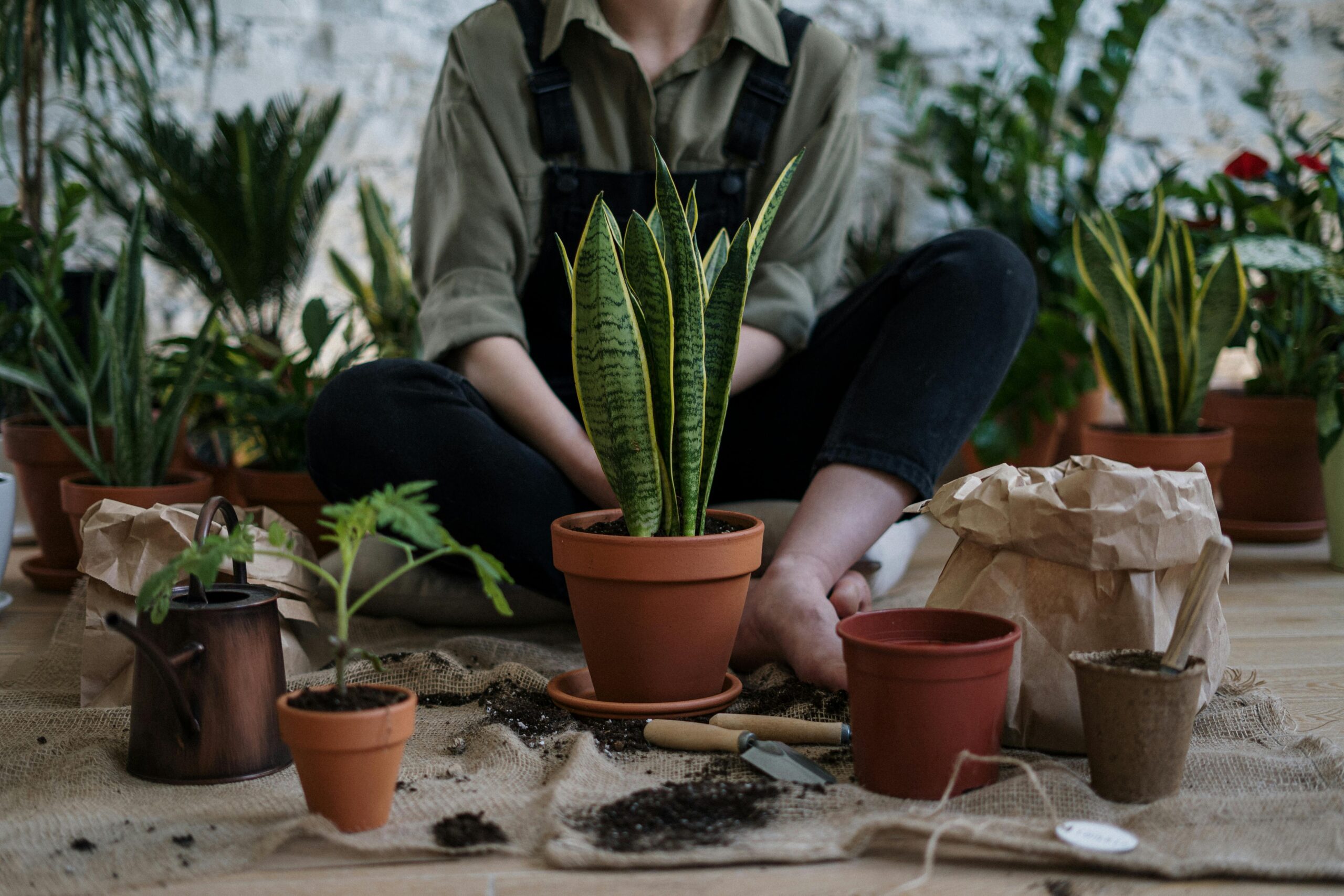
- Making your own compost can help reduce gardening costs
- No need to throw away food waste
- You can make compost in small quantities with minimal initial costs.
- Reusing garbage leads to eco-friendliness
The benefits of compost are
The best thing is that you can make your own nutritious compost !
Gardening and home vegetable gardens
It's very helpful for those who do it.
In addition, I no longer have to worry about how to dispose of the food waste I produce every day.
It's also a great way to start an eco-friendly activity with your children .

- It takes time to become compost.
- If the soil is not stirred regularly, it will start to smell bad.
- Food waste that cannot be decomposed by microorganisms cannot be put into containers.
Because food waste is used as a raw material,
It is inextricably linked to bad odors.
That's why it's so important to do as much prevention as possible.
The effectiveness of the deodorizing filter will decrease over time,
Change it regularly, and adjust the type and amount of food waste you put in.
The key is to adjust it according to the condition of the compost.
It will take about 3 to 5 months from the start.
The soil needs to be stirred regularly
It can be incorporated into your routine work,
It is suitable for those who can continue for a long period of time.

What did you think?
I hope this will be a starting point for your eco-activities.
When you hear about starting composting, it may sound like a big undertaking, but
"Ingredients that are easy to obtain" "Just cut up food waste and add it to the mix"
That's all it takes to get started!
First, start by doing what you can.
The steady efforts of each individual will play a key role in realizing a sustainable society.

